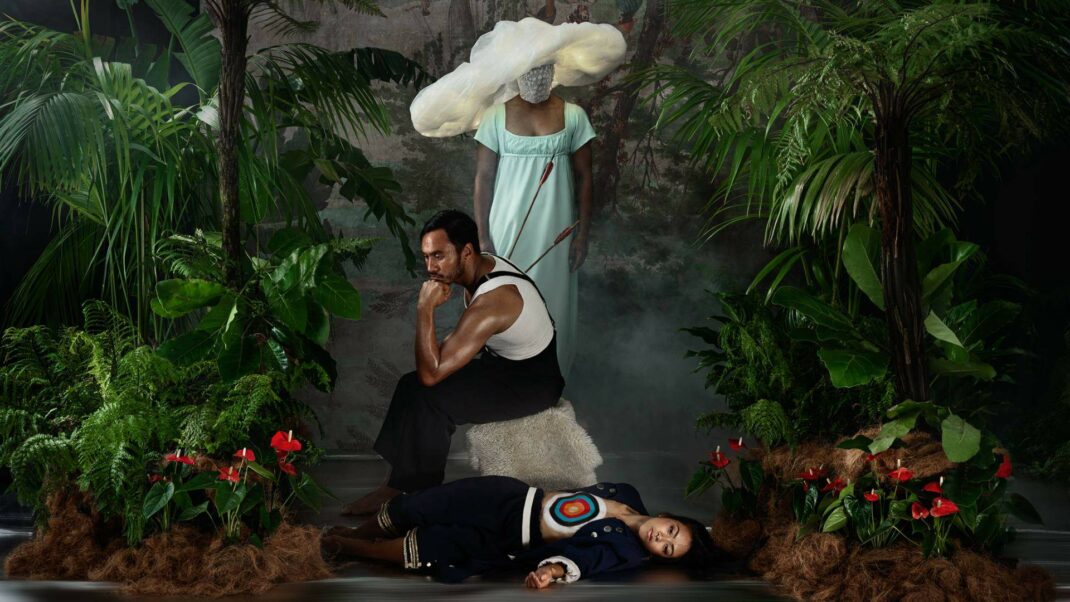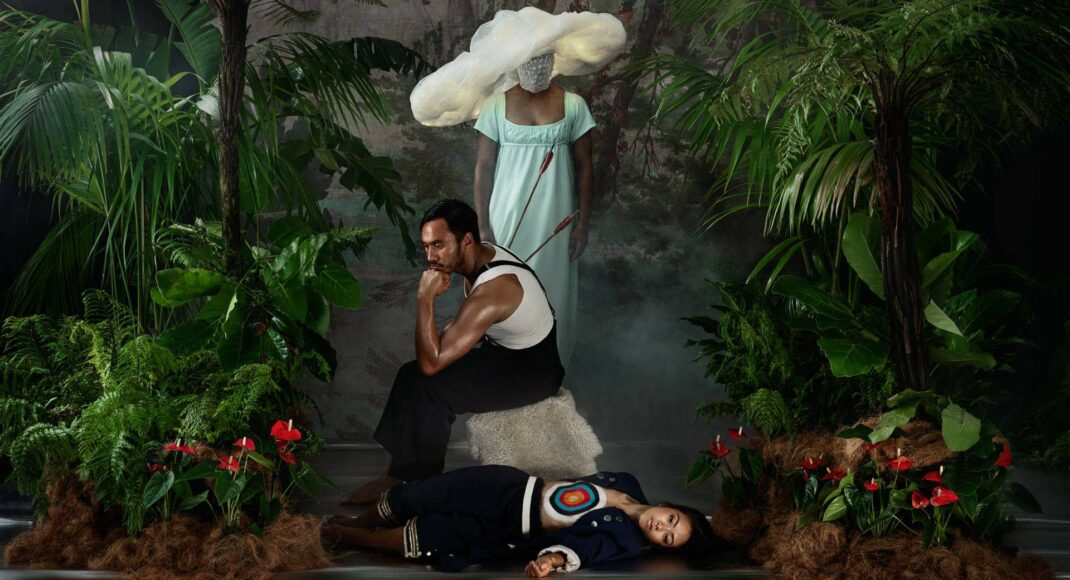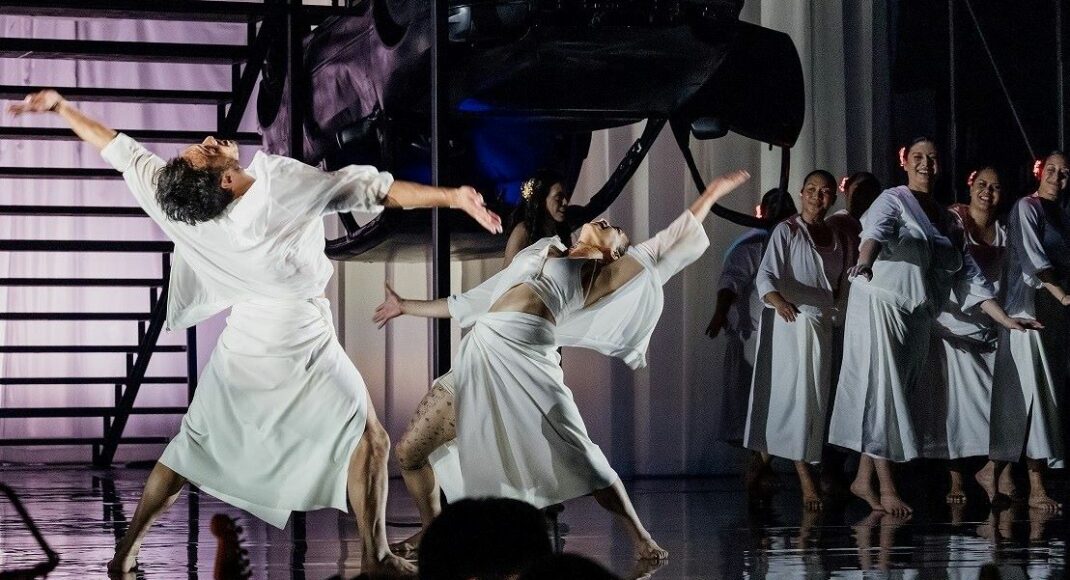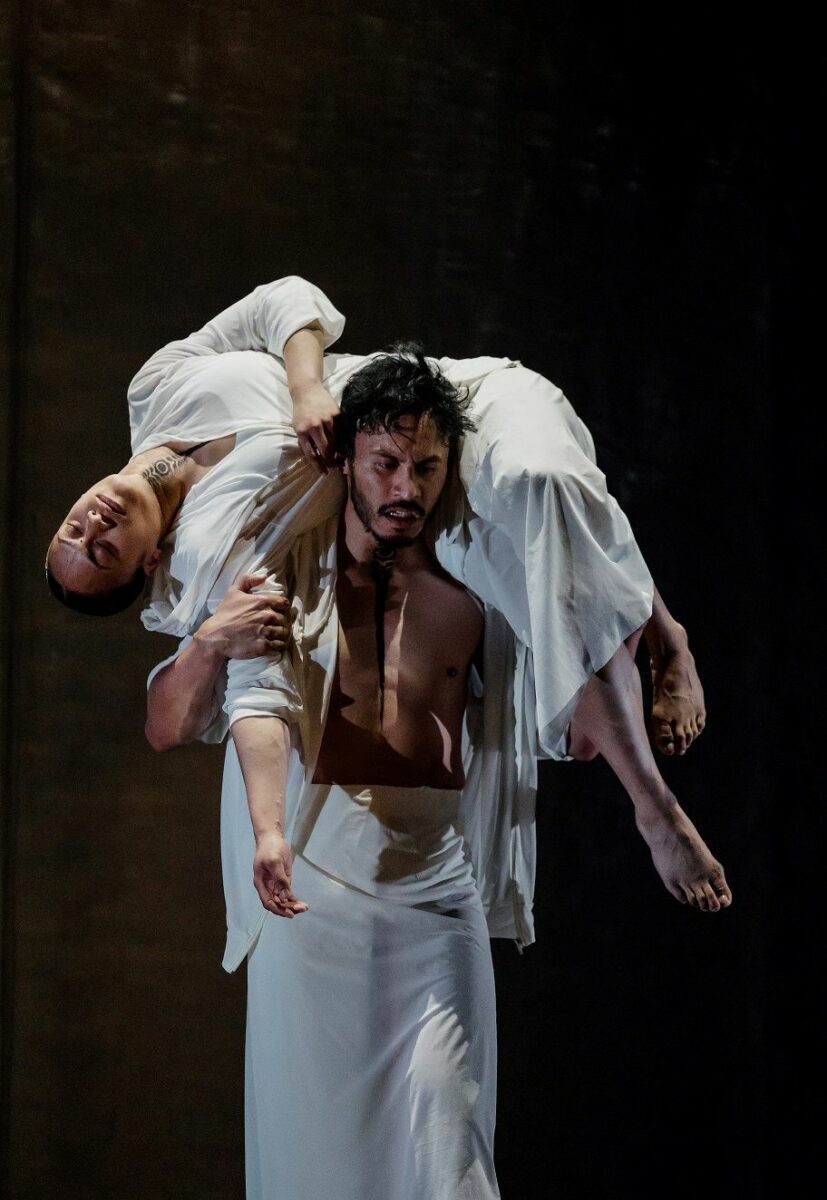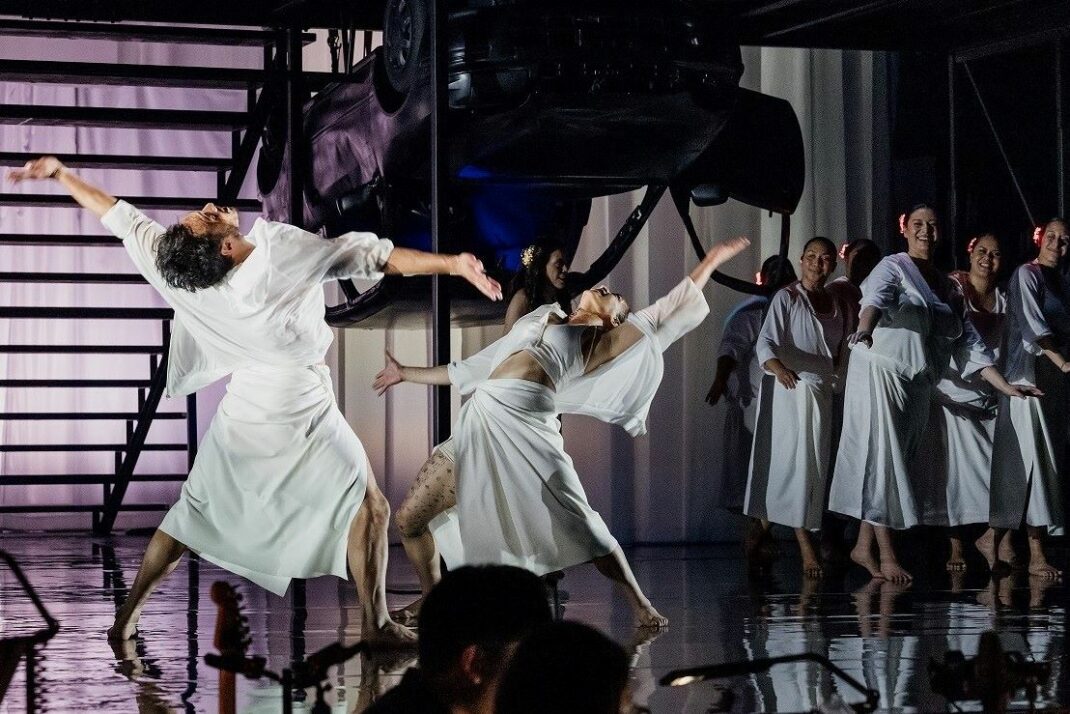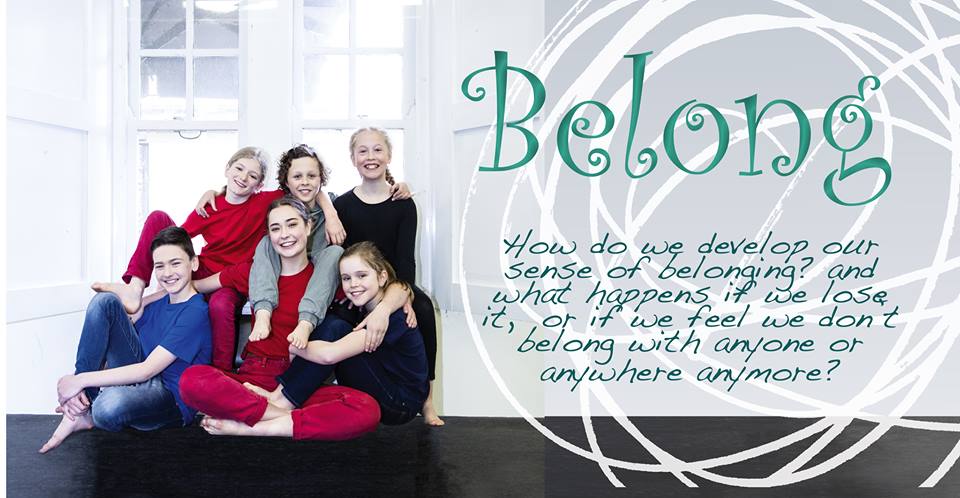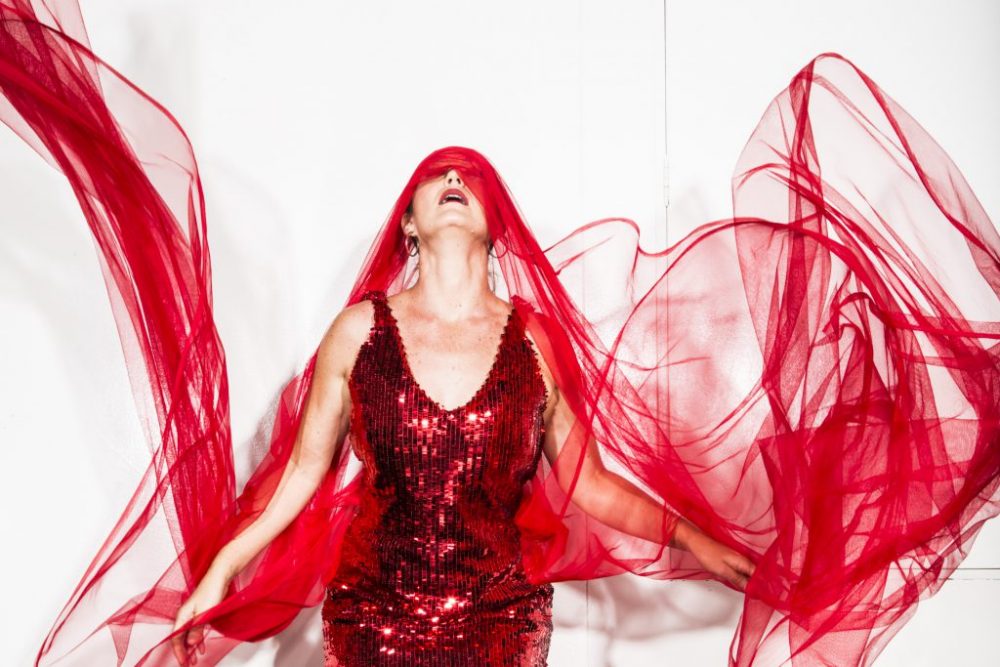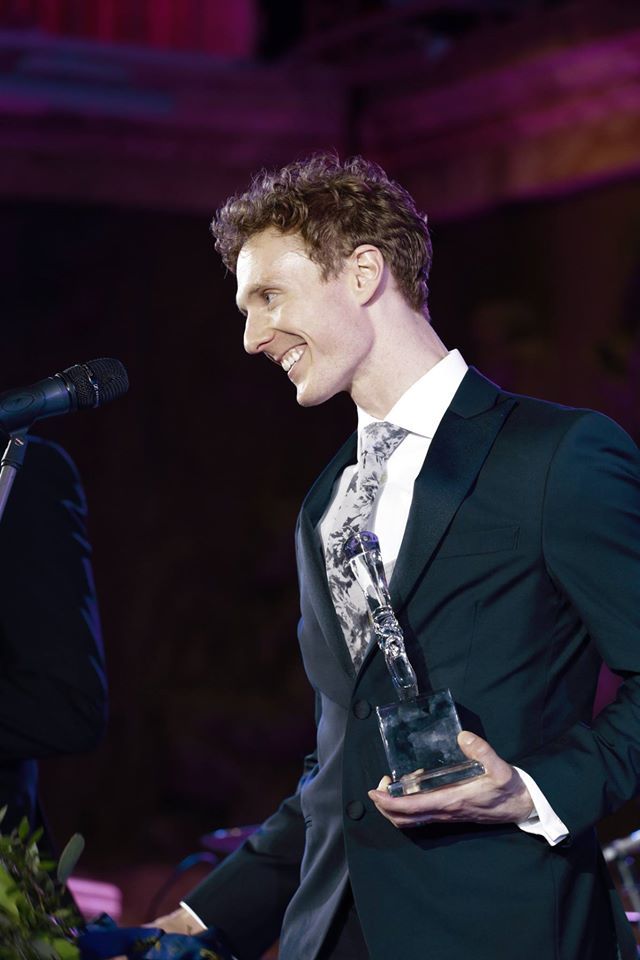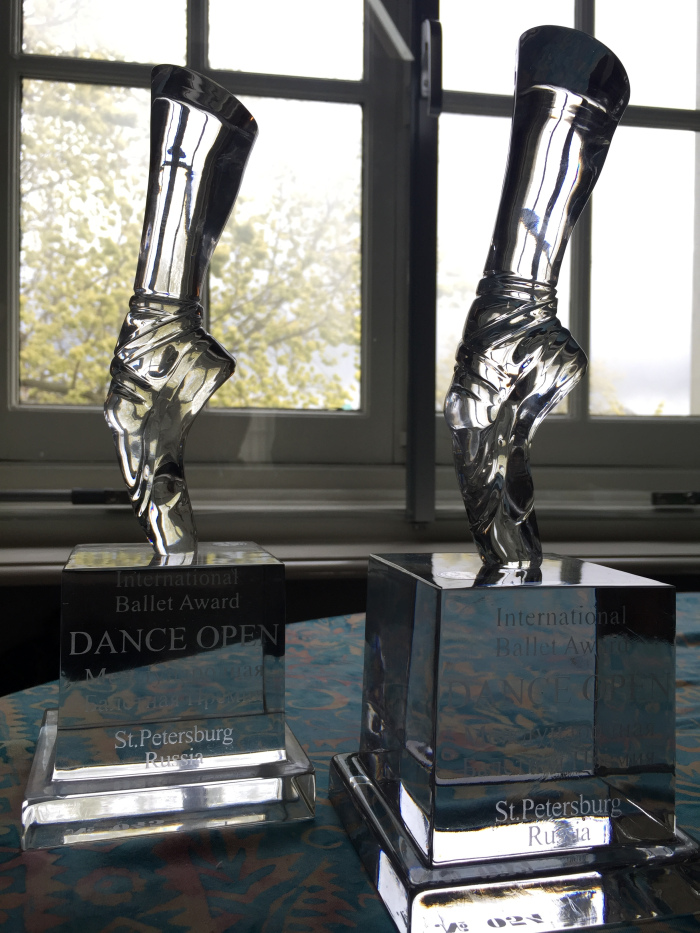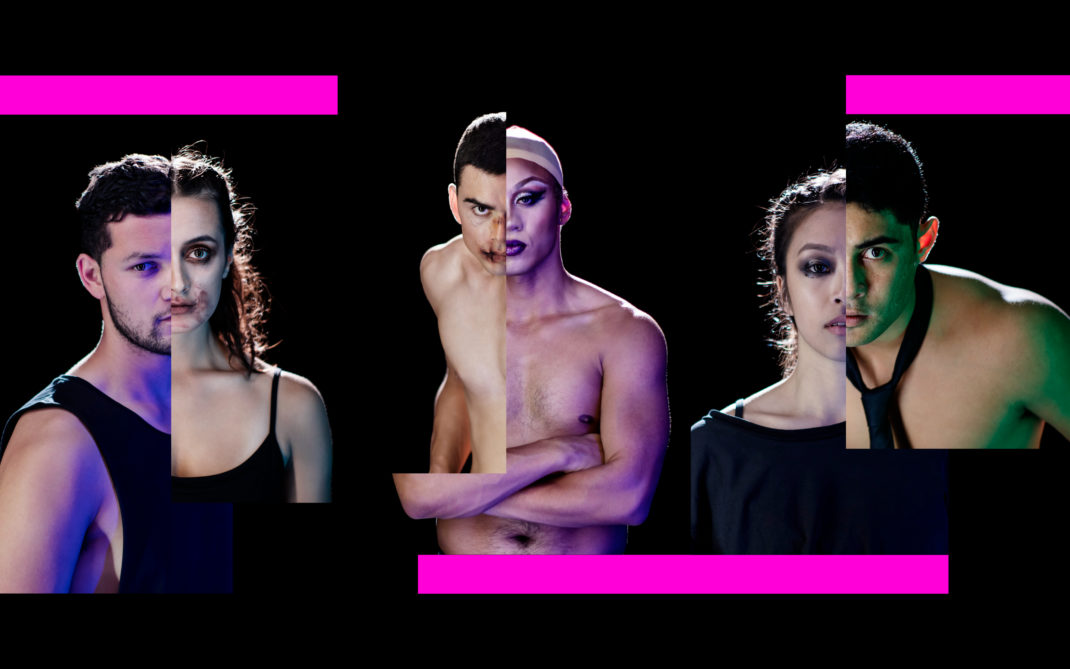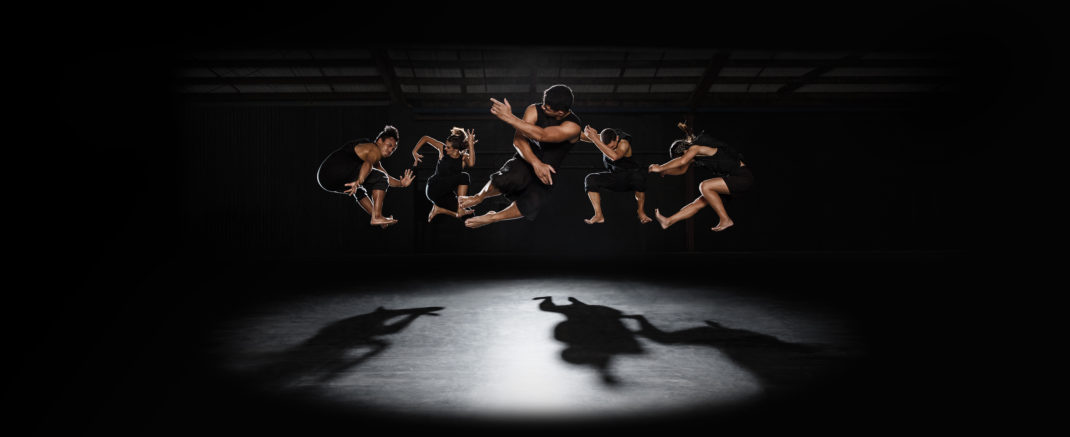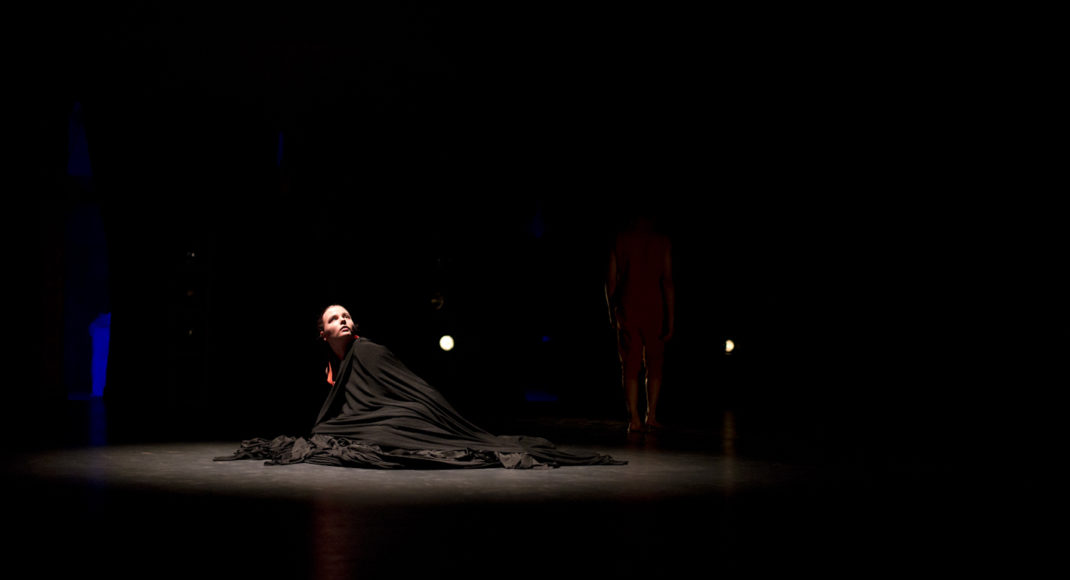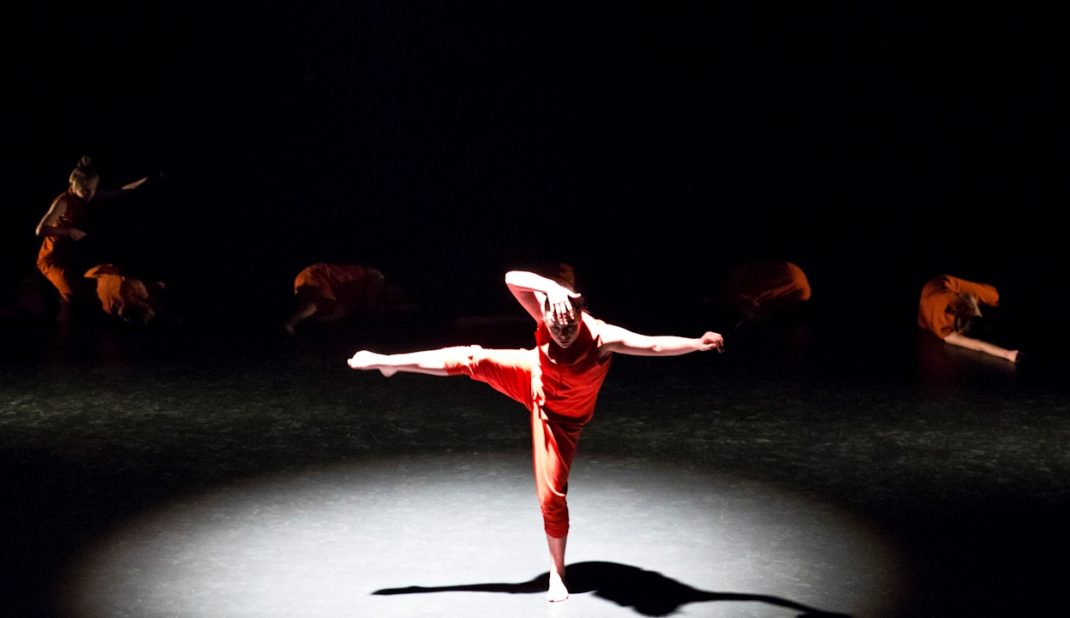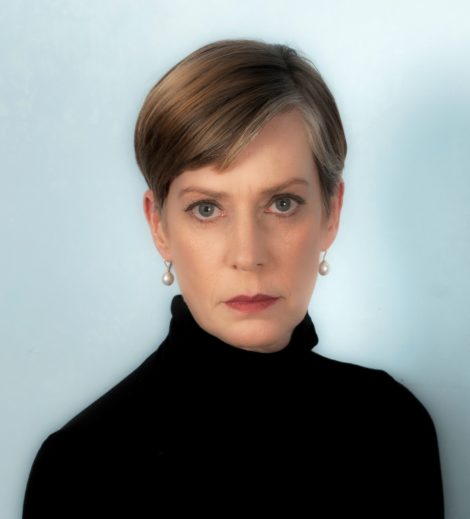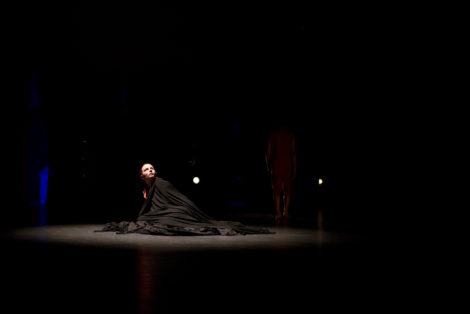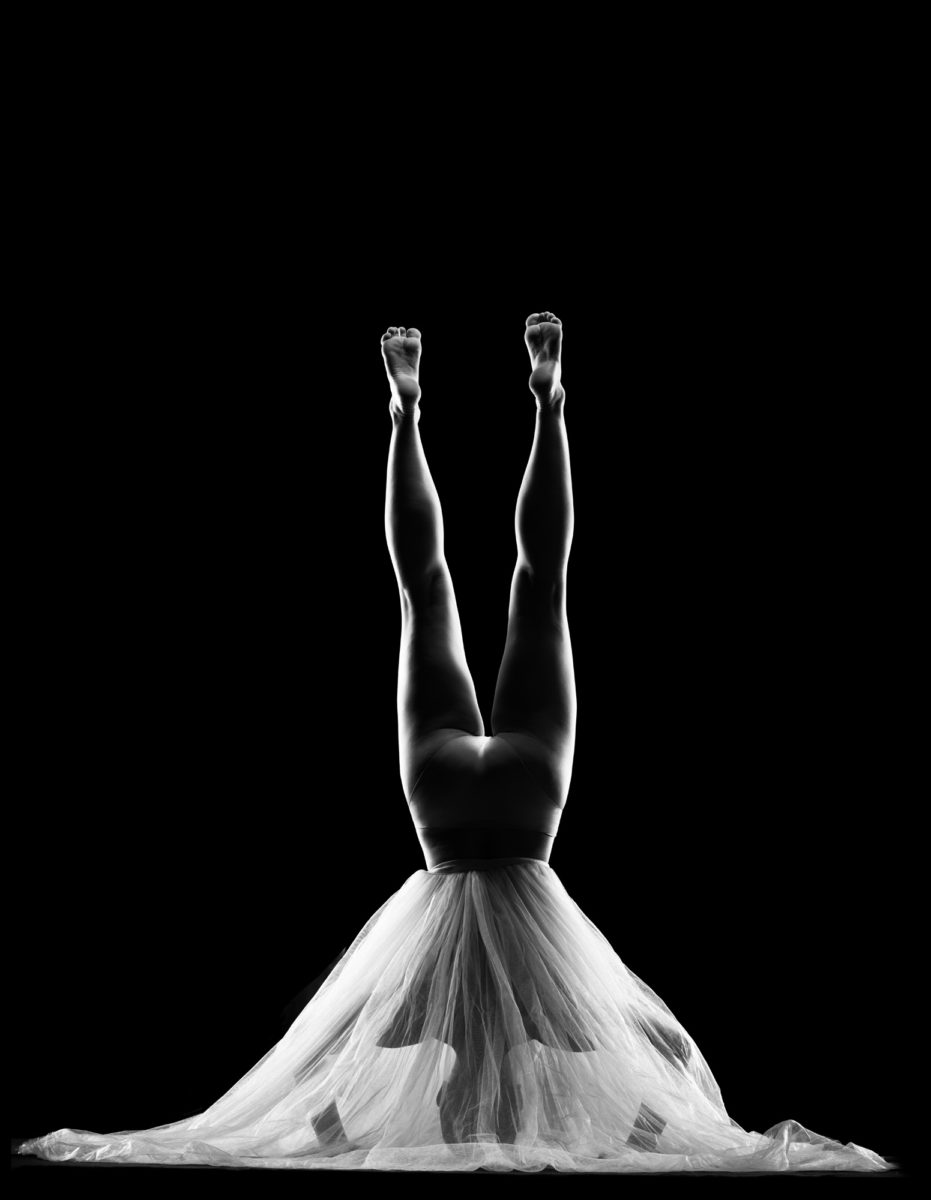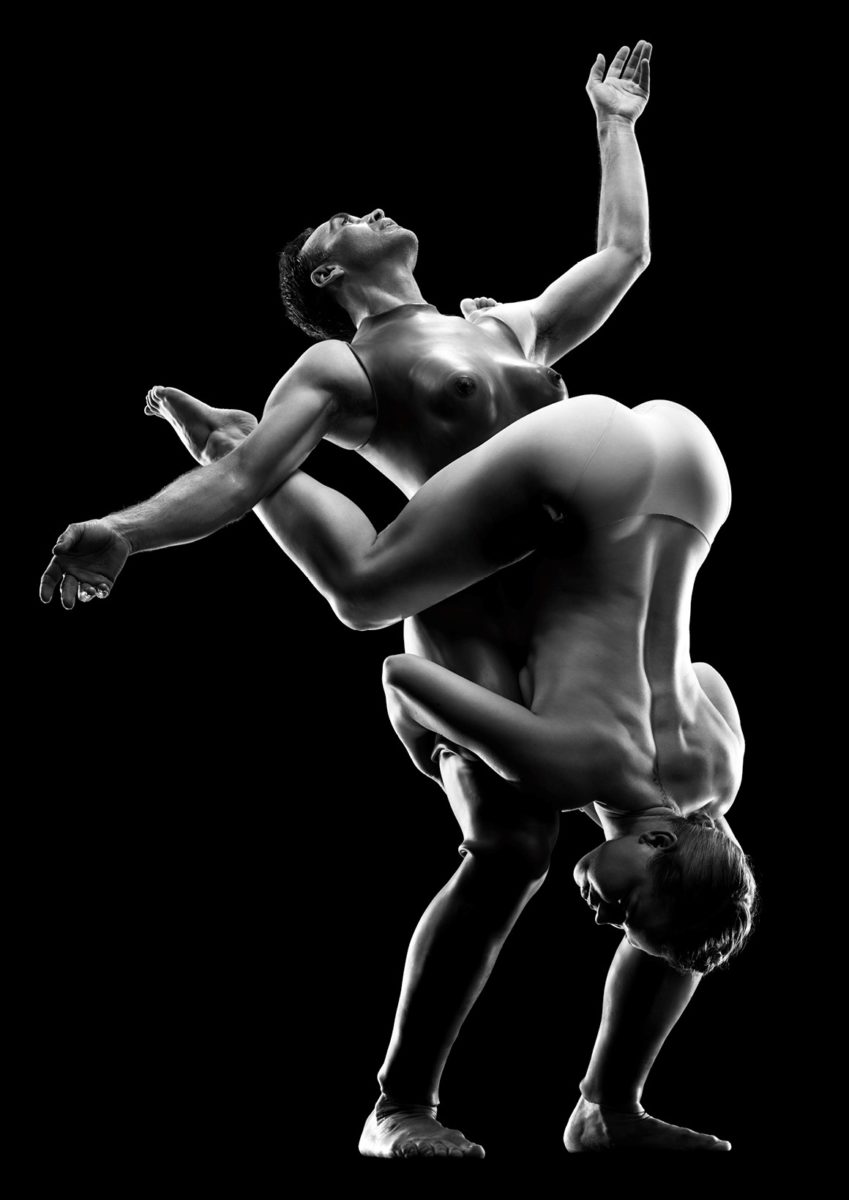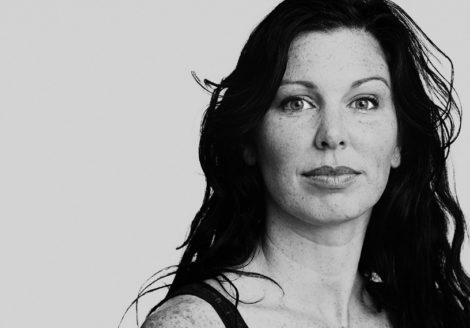22 March 2024. St James Theatre, Wellington
reviewed by Jennifer Shennan
Paradise Rumour, commissioned by Sharjah Festival in UAE (now that’s different), has toured in USA, and also performed in Auckland and Christchurch. This single performance in Wellington marks the end of its current season though further performances in Australia and the Pacific—Noumea? Suva? Honolulu? would make a lot of sense.
The Black Grace team is on top of their game—producing a printed program which contains Ieremia’s fine poem by way of libretto for the work, all the production info you need, and also folds out as a striking poster (see featured image above). It costs $3 and I shouldn’t think there’d be many copies headed for recycling any time soon.
This is dark and courageous choreography from Neil Ieremia in which he calls out the controlling power that missionaries historically claimed in 19th century Pacific, and Samoa in particular. Its message is one of resilience.
The work is strikingly staged with copious tropical vegetation on both sides of the stage, and lighting that follows sunrise through to dark night. This very effectively creates a Pacific Island locality, though be sure this is not anything to do with the Paradise of contemporary tourist attraction. Instead the work runs deep the into the complexity of interactions that missionaries historically required of their original converts, willing or otherwise, and the subsequent generations of migrants.
Paradise Rumour is layered, complex, enigmatic and elliptical, poignant and provocative. There are intriguing sculptural images of costumes or props that change before our eyes in a range of lighting variations. Quite often lately we have seen big shows where, although billed as dance, there’s a much reduced role for dancers to play as high tech audio-visuals move in to play the lead roles. Here there’s miles and miles of intrepid dancing, in fresh and unpredictable rhythms within a stunning score.
There are contrasting movement qualities among the six performers. Fuaao Tutulu Faith-Schuster, Demi-Jo Manaio, Rodney Tyrell—a lyrical woman, a female pocket rocket, a strong graceful male—are dancers who establish the emotional experiences. Three actor-musicians—Vincent Farane, Sione Fataua and Leki Jackson-Bourke—carry the story of the conflicted missionary forward. The rich soundscape by Faiumu Matthew Salapu underpins the whole show.
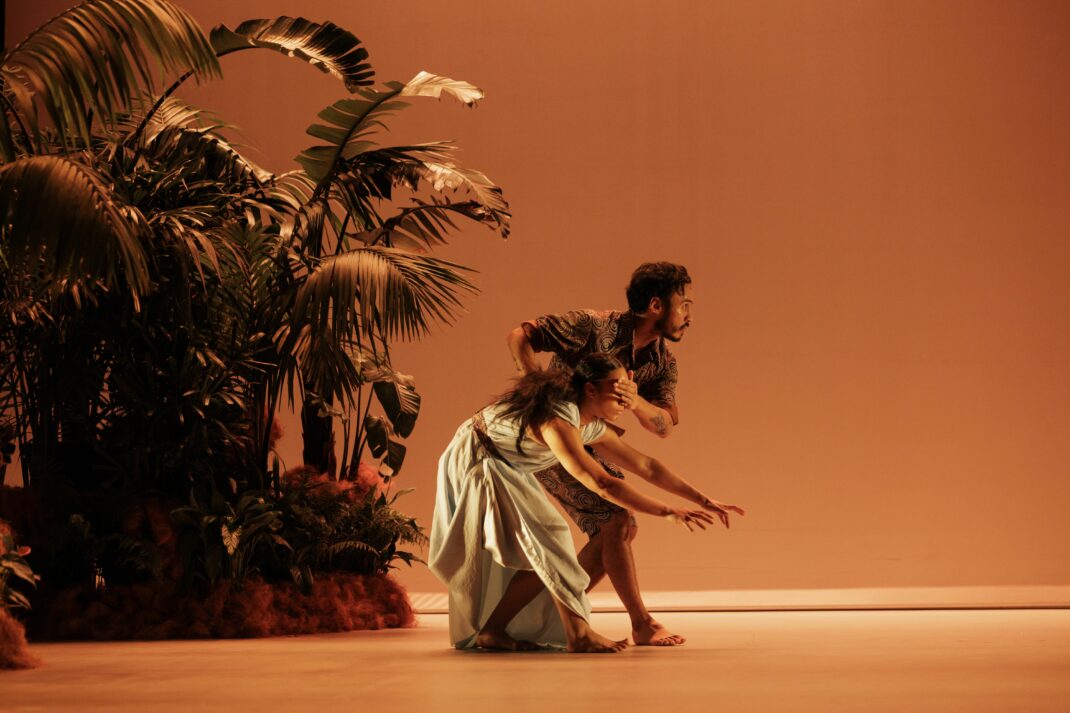
The dancers are running—and my, how they are running! Is that to get to somewhere or away from somewhere? The answer is yes, because they are running on the spot. Alchemy turns this dance show into powerful theatre which is more than the sum of its parts. Such qualities rank Black Grace with Bangarra Dance Theatre’s explorations of Australian indigenous experience, and that’s high praise from me.
The capacity audience left buzzing and smiling—not that the show was cheerful exactly, but because it’s about something, it’s a stunning achievement from every angle, and because its stamina is infectious. Folks on the bus home were still talking animatedly about it. That doesn’t happen often.
Jennifer Shennan, 24 March 2024
Featured image: Poster image for Paradise Rumour. Photo: Duncan Cole/Toaki Okano
